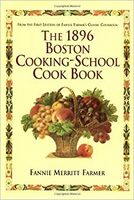Advertisement
Soup Making
The art of soup making is more easily mastered than at first appears. The young housekeeper is startled at the amazingly large number of ingredients the recipe calls for, and often is discouraged. One may, with but little expense, keep at hand what is essential for the making of a good soup. Winter vegetables — turnips, carrots, celery, and onions — may be bought in large or small quantities. The outer stalks of celery, often not suitable for serving, should be saved for soups. At seasons when celery is a luxury, the tips and roots should be saved and dried. Sweet herbs, including thyme, savory, and marjoram, are dried and put up in packages, retailing from five to ten cents. Bay leaves, which should be used sparingly, may be obtained at first class grocers’ or druggists’ seeming never to lose strength, they may be kept indefinitely. Spices, including whole cloves, allspice berries, peppercorns, and stick cinnamon, should be kept on hand. These seasonings, with the addition of salt, pepper, and parsley, are the essential flavorings for stock soups. Flour, corn-starch, arrowroot, fine tapioca, sago, pearl barley, rice, bread or eggs are added to give consistency and nourishment.


